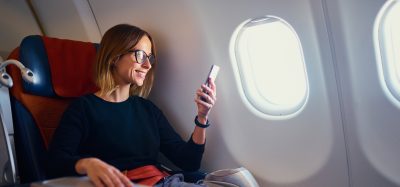Airport social media use takes flight
- Like
- Digg
- Del
- Tumblr
- VKontakte
- Buffer
- Love This
- Odnoklassniki
- Meneame
- Blogger
- Amazon
- Yahoo Mail
- Gmail
- AOL
- Newsvine
- HackerNews
- Evernote
- MySpace
- Mail.ru
- Viadeo
- Line
- Comments
- Yummly
- SMS
- Viber
- Telegram
- Subscribe
- Skype
- Facebook Messenger
- Kakao
- LiveJournal
- Yammer
- Edgar
- Fintel
- Mix
- Instapaper
- Copy Link
Posted: 20 January 2014 | Dr Mathew McDougall, CEO and founder, Digital Jungle | No comments yet
Social media marketing is a growing trend. Dr Mathew McDougall of Digital Jungle, considers how connecting with travellers can help boost airport traffic and revenue…
![]()
![]()
The rise of the ‘Connected Traveller’—taken to mean travellers who use laptops, smartphones and tablets to stay online and informed even while travelling—is creating new means by which airports can engage with travellers. Social media is being used in a variety of ways. Melbourne Airport, for example, helps travellers to plan their trips by providing deals on flights from Melbourne on the airport’s Twitter feed. Outagamie Airport (ATW) in Wisconsin ran a campaign called ‘Memphis Money’ on Facebook. They printed 10,000 golden tickets and each ticket had an individual lucky number on the back. Each ‘Memphis Money’ ticket had instructions inviting the finder to participate in the activity on the airport’s Facebook page. The winning number was announced on Facebook and the winner was awarded a $500 Delta Air Lines voucher. These two examples demonstrate how airports are starting to interact with passengers by providing offline value online. Browsing the Facebook pages of Denver International Airport or Boston Logan Airport reveals airports using social media to promote retail outlets, provide weather/flight status updates and encourage travellers to share their photos online.
Although this trend of airports going social is relatively new, it is already undergoing at least one major change: airports worldwide are adding Chinese social media platforms into the marketing mix. It’s no secret that Chinese travellers are going abroad in ever-greater numbers and spending more abroad than their peers in other countries. As the hospitality and travel industries shift their marketing programs and budgets towards attracting a larger number of these outbound Chinese tourists, airports must adapt as well or risk being alienated from potentially huge new markets. For example, unhappy travellers may post and share negative comments on social media about a lack of amenities or high prices for Wi-Fi, which could lead followers to choose other transport hubs or carriers which serve more traveler-friendly airports.
Chinese citizens tend to stay connected online: as many as 95% of Chinese internet users from Tier One through Tier Three cities have social media accounts. Smartphone usage is skyrocketing with some estimates putting total smartphone ownership at 420 million countrywide. When these ‘netizens’ go abroad, it is likely that they will bring their gadgets and browsing habits with them. These connected travellers are no strangers to social media marketing. Beijing Airport has over 460,000 followers and the Hangzhou Airport has over 620,000 followers. Every day, Chinese travellers interact and receive information about travel from these airports.
Changi airport is the best example of a foreign airport leveraging Sina Weibo to reach Chinese tourists. They have attracted over 120,000 followers and they actively engage with Chinese travellers. They provide information about traveling in Singapore and promote the airport’s features including the ‘Changi Airport Transit Hotel’. Another great example is Aéroports de Paris, which has attracted over 20,000 followers and actively promotes the shopping experience provided by the 14 different airports they manage in the Île-de-France (Paris) area. Chinese travellers that pass through these airports are more likely to shop and interact with the airport based on their social media experience.
According to TripAdvisor, travellers are naturally social: “91 per cent of travellers post pictures of vacations, 57 per cent post status updates and 34 per cent check-in with sites like Foursquare while travelling. Additionally, 75 per cent of business travellers and frequent fliers carry smartphones. Just as many of them log-on to airport Wi-Fi when it is free.” Providing incentives for these travellers will help increase awareness about an airport’s features. Providing discounts on merchandise when travellers share pictures of themselves at the airport, providing free coffee for travellers who share airport content on Weibo or providing airport maps on WeChat are just a few examples of how airports can begin engaging with Chinese travellers. The travellers benefit by receiving vital information about the airport and their travel destination.
Foreign airports can attract and connect with these newly mobile Chinese travellers by creating social media marketing plans that utilise platforms such as WeChat and Weibo to deliver relevant and engagement content on a regular basis. Airports that become ‘China-friendly’ can expect to see an increase in traffic from mainland China and in turn see increased revenue from these connected Chinese travellers.
About the author
Dr. Mathew McDougall, an Australian native, has been involved in the Chinese internet and media industries for nearly 11 years. Matthew is currently the CEO and founder of Digital Jungle, a leading Chinese social media marketing agency.
For further information visit: www.digitaljungle.com.cn














